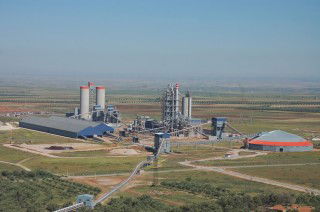After over a decade of steady growth, German construction demand has been dampened due to rising interest rates and high inflation. Despite the challenging conditions, the cement sector is focussing on CO2 reduction, including the first steps towards carbon capture and storage as one of the major levers to achieving net zero emissions by 2045. By Martin Schneider and Dennis Behrouzi, VDZ, Germany.
With 21 companies, the German cement industry is represented by a mix of medium-sized, often family-owned enterprises as well as large international groups. Altogether, they operate 53 cement plants, of which 33 are integrated. With around 8000 employees and using 49Mt of raw materials, the industry produced 32.9Mt and 23.2Mt of cement and clinker, respectively, in 2022. In doing so, it generated a revenue of around EUR3.4bn (see Table 1).
|
Table 1: German cement industry in figures |
|||
|
|
2020 |
2021 |
2022 |
|
Employees |
7904 |
7924 |
7973 |
|
Turnover (EURbn) |
3.05 |
3.05 |
3.43 |
|
Cement consumption (Mt) |
30.1 |
29.2 |
28.0 |
|
Cement production (Mt) |
35.5 |
35.0 |
32.9 |
|
Clinker production (Mt) |
24.7 |
25.2 |
23.2 |
|
Raw material input (Mt) |
51.0 |
52.9 |
49.0 |
|
CO2 emissions (Mt) |
20.1 |
20.5 |
18.8 |
|
Sources: VDZ, Federal Statistical Office Germany (Destatis), German Emissions Trading Authority (DEHSt) |
|||
